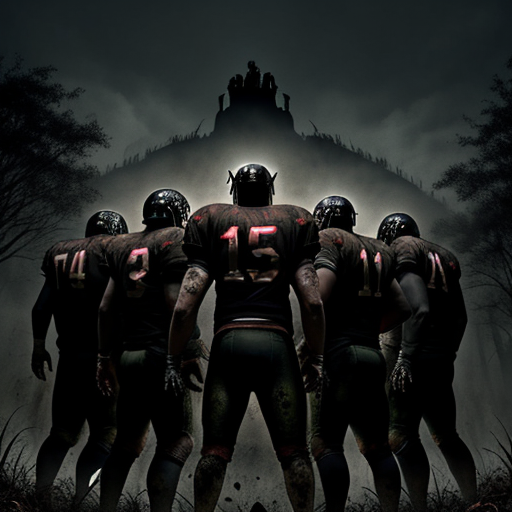This article focuses on building lineups with a quality foundation by utilizing the powerful Groups and Rules/Limits tools within the industry’s optimization tools. All of the concepts and pairings included below can be applied to hand-building as well. The goal is to create lineups that have high-scoring correlation and take advantage of combined outcomes within stacks while limiting the likelihood of building inefficient or negatively correlated entries for a full slate of NFL DFS lineups.
This video was made in a former life and features a detailed demonstration of how to apply these concepts in one leading optimizer tool: Fantasy Cruncher – How-To Video
All references to Sims were done via friends of the site: acemind.io
Don’t miss the new Above/Below feature article for a few of our top picks, coming Sunday morning
Week 16 DraftKings & FanDuel NFL DFS Stack Rankings
The following stack rankings were created by pairing each team quarterback with his top three scoring options, whether they are three wide receivers, two wide receivers and a tight end, a wide receiver, tight end, and running back, or any viable combination. In some cases, an expensive running back, such as Tony Pollard, can push the overall price point of his team stack in the value rankings.
| TEAM | OPP | FD$ | FDpRank | FDvalRank | DK$ | DkpRank | DKvalRank |
|---|---|---|---|---|---|---|---|
| HOU | JAC | $30,500 | 1 | 1 | $27,600 | 1 | 4 |
| CIN | CAR | $31,300 | 2 | 8 | $26,100 | 2 | 3 |
| ARI | WAS | $29,700 | 3 | 3 | $25,000 | 3 | 1 |
| PHI | TB | $31,600 | 4 | 16 | $25,300 | 5 | 5 |
| SF | NE | $31,600 | 5 | 17 | $26,200 | 6 | 12 |
| MIN | GB | $30,100 | 6 | 12 | $25,900 | 4 | 7 |
| BAL | BUF | $30,000 | 7 | 14 | $0 | 0 | 0 |
| NYJ | DEN | $28,800 | 8 | 5 | $25,200 | 7 | 6 |
| BUF | BAL | $29,100 | 9 | 6 | $0 | 0 | 0 |
| KC | LAC | $29,000 | 10 | 7 | $25,600 | 9 | 14 |
| NO | ATL | $29,200 | 11 | 11 | $25,500 | 8 | 10 |
| WAS | ARI | $26,900 | 12 | 4 | $22,200 | 13 | 2 |
| GB | MIN | $26,200 | 13 | 2 | $23,600 | 12 | 8 |
| TB | PHI | $28,900 | 14 | 19 | $26,200 | 10 | 19 |
| ATL | NO | $27,700 | 15 | 15 | $23,800 | 11 | 9 |
| CLE | LV | $25,400 | 16 | 10 | $22,600 | 16 | 13 |
| IND | PIT | $27,100 | 17 | 21 | $24,400 | 15 | 20 |
| JAC | HOU | $25,500 | 18 | 13 | $23,300 | 14 | 16 |
| CHI | LAR | $26,200 | 19 | 20 | $23,600 | 17 | 18 |
| LAR | CHI | $26,100 | 20 | 23 | $22,800 | 20 | 22 |
| LV | CLE | $23,900 | 21 | 9 | $21,600 | 18 | 15 |
| PIT | IND | $24,500 | 22 | 18 | $20,700 | 19 | 11 |
| CAR | CIN | $24,900 | 23 | 22 | $21,400 | 21 | 17 |
| LAC | KC | $25,700 | 24 | 26 | $21,500 | 22 | 24 |
| DEN | NYJ | $22,800 | 25 | 24 | $19,900 | 23 | 21 |
| NE | SF | $23,600 | 26 | 25 | $19,900 | 24 | 23 |
Week 16 DraftKings & FanDuel NFL DFS Stacks & Optimizer Groups
Overview
Rules and limits are powerful tools for lineup creation for NFL DFS where our primary focus is creating highly correlated lineups via stacking players from the same game. Lineups will typically be coordinated around the quarterback selection, which informs at least one pass-catcher choice, establishes a budget, eliminates a defense, and sets the tone for the lineup. We will typically look to correlate a quarterback and at least one of his pass-catchers in every lineup, with most of those including a skill player from the opposing team who will have a chance to support the stack in a high-scoring game that drives offense on both sides to create additional correlated scoring potential. Stacking multiple pass-catchers in the same lineup is a sound approach as well, though there are typically overall ceilings on how much volume is available at any given position. We do not typically include running backs who are not pass-catchers as priorities in NFL DFS groups, they typically stand alone with the selection of the quarterback-based stack informing remaining salary which then informs the running back selections. High-volume backs and pass catchers out of the backfield can be included in the groups utilized below, but it is frequently not necessary to do so with the very best players, they arrive in lineups without help.
The following rules and limits are typically applied in an optimizer’s Advanced Options menu. Notes are included to elucidate the reasons behind each rule and to explain what it does during the lineup creation process. These settings can typically be saved for re-use, which is highly recommended. Saving the Week 1 groups that will be created below is also a very good idea to save time with updates instead of recreation each week. These groups are created manually, but most optimizers include automated group creators that can help accelerate the curation process.
DraftKings + FanDuel Settings & Advanced Options
Unique Players Per Lineup– This setting forces the optimizer to utilize at least X new players who were not in Lineup 1 when it creates Lineup 2, and so on. It is recommended to utilize at least two, and more can be applied depending on the degree of differentiation desired within lineups.
Team Salary– a minimum or maximum salary spend can be applied here as needed, though this is not a part of the recommended process in this space as leaving salary on the table is an easy path toward creating unique lineups while not necessarily making a negative expected value play.
FLEX position– allows restrictions on what positions can be rostered at the FLEX spot. The only position to consider in this case is tight end, but that is something to be restricted at the individual level via Groups, rather than at the global level.
Global Exposure Setting – allows caps on the maximum percentage of lineups a player can appear in within a given pool of lineup construction. This is a powerful tool for shaping lineups but if settings are too low attempts to build a full set will fall short due to a lack of available players, one of the most common errors in optimizer building. Most optimizers include the ability to calculate ownership caps continuously or at the end of the pool creation process. If caps are calculated continuously, a player with a 25% cap who is utilized in Lineup 1 will not be available for use again until Lineup 5 , we recommend turning OFF continuous calculation.
Randomness – provides a random multiplier to each player’s projected point total based on the set values. This is a valuable tool that helps differentiate lineups instead of simply creating them in order of highest median projected scores. Using some randomness for lineup generation is strongly recommended but the degree to which it is applied is down to personal preference, but 15-25% is fine to get started. We suggest heavier randomness to more event-based players like wide receivers while tracking volume-based positions like running backs more toward their median or ceiling projections.
DraftKings + FanDuel Team Stack Rules
This set of rules will force optimizers to build lineups with certain combinations. We are looking to stack at least one skill player, almost always a pass-catcher, with his quarterback while also playing a skill player from the opposing team in the lineup. The theory behind this build is that a high-scoring stack will require some response from the opposing team to deliver a ceiling score in most situations. When that is not the case, the team that is winning will simply slow down and run out the clock. Most optimizers utilize a “complete the sentence” approach for rule creation with selections from drop-down menus following a very straightforward logic. Exceptions to these rules can be added for specific teams and players on most optimizer products.
- QB with at least one WR/TE from Same Team (note: It is fine to set this to two or to utilize two versions of this rule, one with WR/TE and one with RB/WR/TE, but we refine this via Groups)
- QB with at least one RB/WR/TE from the Opposing Team (we typically prefer the pass-catchers but high-volume running backs can be effective here)
- QB with at most zero DST from the Same Team (this is a personal preference; high-scoring teams and quarterbacks tend to leave their defenses on the field, exposing them to simple point-scoring negatives)
Limits & Custom Rules and Requirements
Limit rules can be applied to restrict certain combinations from coming together. This is powerful for limiting multiple running backs from the same team or getting overweight to a certain stack within a lineup.
- Limit QB/RB/WR/TE from Same Team to three
- Limit RB/WR/TE from the Same Team to one unless paired with QB from the Same Team OR the Opposing Team
- Limit RB from Same Team to one (we also do this with WR in a separate rule that adds an “unless paired with QB or opposing QB” but it’s a personal preference for NFL DFS, we typically do not want two pass-catchers from the same team without their quarterback)
We will maintain the list of rules and limits throughout the season, with occasional tweaks, if needed. Each week sees yet another fresh crop of value plays as situations change and injuries create opportunities around the league. These changing roles and emergent value plays are accounted for in the process of creating these groups from week to week. After a large pool of lineups is created utilizing these groups, it is still of critical importance to filter them for factors including ceiling projections and leverage potential. These groups should help ensure that a highly correlated premium set of options that rotates through a variety of combinations is utilized to create the full lineup pool.
Sunday Updates
Any changes and recommended boosts to specific players will be provided in an early morning update each Sunday.
NFL DFS Week 16 Features & FREE Projections
- Week 16 FanDuel & DraftKings Projections – FREE
- Week 16 Above/Below – Key Picks
- Week 16 Quarterback Scoring & Value Rankings
- Week 16 Running Back Scoring & Value Rankings
- Week 16 Pass-Catcher Scoring & Value Rankings
- Week 16 Defense Scoring & Value Rankings
Construction Concept
Team groups are built by utilizing the quarterback as the KEY player in group settings. The quarterback decision in each lineup is the driving factor in which stack is utilized in that lineup and which corresponding plays are then made to work within the structure and requirements. Built to specification, each team will have two groups, a team group, and an opponent group, both of which utilize the same quarterback as the key player. Each game will have a total of four groups. This is the best approach to truly capture the requirement of playing individual “run-back” plays from the opposing team. A more basic approach would be to include all of the skill players from a game in each quarterback’s group and rely on rules and limits to restrict any potential overflow. It is highly recommended to save the Week 1 groups as a foundation that will be updated for the rest of the season. The recommended groups will include skill players who have an active role in their offense and provide significant correlation with their quarterback’s scoring, often bell-cow running backs who do not specialize in the passing game will not be included in groups as they are projected highly and appear on their own in basically correct distributions, while also not always providing the strongest positive correlation plays. Stacking quarterbacks with pass-catchers and allowing running backs to fall into the lanes then created by settings, available salary, and randomness should create a well-distributed set of quality lineups. These groups are updated weekly to account for changes in utilization, schemes, injuries, target shares, and more.
Team Groups for DraftKings & FanDuel – Week 16
The goal is to create a large pool of well-built lineups that can be utilized in any large-field GPP contest. Our approach is to build far more lineups than needed and utilize a sorting table or sim process to filter to the best set of lineups for entries. The lineups created in these crunches should provide a broad distribution that includes some of the lower-owned high-upside skill players from each stack. Applying boosts is critical in pushing and pulling ownership to individual players within their team’s stacked lineups if they are appearing too much or too little.
The groups below are designed so that each quarterback will have two groups to create, one with his skill players and another with the opposing team. A more basic approach would be to add them all to one large group with an “at least three” and let rules and limits set things, but there is a more granular level of control in creating them separately.
Utilizing two groups also allows us to place running backs into the “run-back” position in certain teams while not including them in the primary stack for their team. This is useful when there is a situation with an extremely highly projected running back who does not necessarily fit into his team’s passing game. These players are threaded throughout the following construction recommendations.
Note for the Rotogrinders optimizer, we recommend trimming the automatically created groups that can be accessed under Team Groups, Opponent Groups, and Max Position Groups to match these groups for lineup building. We typically utilize the Stacks tab to enforce constructions as well, but a key requirement is missed in the automated groups. The Max Position groups need the manual addition of the running backs and tight ends to the group that is created with the wide receivers with a setting of max 1 and the team’s quarterback selected as a key player with the designation of using that group when the quarterback is NOT in the lineup. This is done to eliminate the possibility of three skill players from the same team appearing at running back, tight end, and wide receiver together without their quarterback involved. A simple limit of three players per team will keep things to just a quarterback with two skill players in stacks after that. Update: if one were to reset their saved settings on RG’s optimizer new options will reveal themselves, including thankfully a toggle to take care of this from the main build rules page. There is also a non-QB group with a max-1 setting that works better for this purpose because the toggle on the main page will limit stacks to just a 1-1 combination, seemingly as a bug.
Note for all optimizers the rules can be utilized to force bring-back plays in some sets of crunches and turned off for others as a global function instead of changing each group to “exactly one” bring-back play, wherever applicable, but it will apply to all teams.
Arizona Cardinals
Key Player: Kyler Murray
Setting: at least one
Team Group: Trey McBride, James Conner, Michael Wilson, Greg Dortch, Rondale Moore, Elijah Higgins (large field), Zach Pascal (large field)
Opposing Setting: at most one
Opposing Group: DJ Moore, Cole Kmet, D’Onta Foreman, Darnell Mooney, Tyler Scott
Lineup Notes:
Atlanta Falcons
Key Player: Taylor Heinicke
Setting: exactly one
Team Group: Bijan Robinson, Drake London, Kyle Pitts, Jonnu Smith, Van Jefferson, KhaDarel Hodge (large field)
Opposing Setting: at most one
Opposing Group: Jonathan Taylor, Josh Downs, Alec Pierce, DJ Montgomery, Kylen Granson
Lineup Notes:
Carolina Panthers
Key Player: Bryce Young
Setting: exactly one
Team Group: Chuba Hubbard, Adam Thielen, Jonathan Mingo, DJ Chark Jr. (large field), Ihmir Smith-Marsette (large field)
Opposing Setting: at most one
Opposing Group: Aaron Jones, Jayden Reed, Dontaviyon Wicks, Romeo Doubs, Tucker Kraft
Lineup Notes:
Chicago Bears
Key Player: Justin Fields
Setting: at most two (this allows for “naked” Fields lineups)
Team Group: DJ Moore, Cole Kmet, D’Onta Foreman, Darnell Mooney, Tyler Scott
Opposing Setting: at most one
Opposing Group: Trey McBride, James Conner, Michael Wilson, Greg Dortch, Rondale Moore
Lineup Notes:
Cleveland Browns
Key Player: Joe Flacco
Setting: at least one
Team Group: David Njoku, Amari Cooper, Jerome Ford, Elijah Moore, Cedric Tillman, Marquise Goodwin (large field),
Opposing Setting: at most one
Opposing Group: Devin Singletary, Nico Collins, Noah Brown, Dalton Schultz, Robert Woods
Lineup Notes:
Dallas Cowboys
Key Player: Dak Prescott
Setting: at least one
Team Group: Ceedee Lamb, Tony Pollard, Jake Ferguson, Brandin Cooks, Rico Dowdle (large field), Michael Gallup, Jalen Tolbert (large field), KaVontae Turpin (large field)
Opposing Setting: at most one
Opposing Group: Tyreek Hill, Jaylen Waddle, De’Von Achane, Raheem Mostert, Cedrick Wilson Jr., Durham Smythe
Lineup Notes:
Detroit Lions
Key Player: Jared Goff
Setting: at least one
Team Group: Amon-Ra St. Brown, Jahmyr Gibbs, David Montgomery, Sam LaPorta, Jameson Williams, Josh Reynolds, Kalif Raymond (large field)
Opposing Setting: at most one
Opposing Group: Justin Jefferson, Ty Chandler, TJ Hockenson, Jordan Addison, KJ Osborn
Lineup Notes:
Green Bay Packers
Key Player: Jordan Love
Setting: at least one
Team Group: Aaron Jones, Jayden Reed, Dontayvion Wicks, Romeo Doubs, Tucker Kraft, Malik Heath (large field)
Opposing Setting: at most one
Opposing Group: Chuba Hubbard, Adam Thielen, Jonathan Mingo, DJ Chark Jr.
Lineup Notes:
Houston Texans
Key Player: Case Keenum
Setting: at least one
Team Group: Devin Singletary, Nico Collins, Noah Brown, Dalton Schultz, Robert Woods, John Metchie III (large field), Xavier Hutchinson (large field)
Opposing Setting: at most one
Opposing Group: David Njoku, Amari Cooper, Jerome Ford, Elijah Moore, Cedric Tillman
Lineup Notes:
Indianapolis Colts
Key Player: Gardner Minshew II
Setting: at least one
Team Group: Jonathan Taylor, Josh Downs, Alec Pierce, DJ Montgomery, Kylen Granson, Juwann Winfree (large field)
Opposing Setting: at most one
Opposing Group: Bijan Robinson, Drake London, Kyle Pitts, Jonnu Smith, Van Jefferson
Lineup Notes:
Jacksonville Jaguars
Key Player: Trevor Lawrence
Setting: at least one
Team Group: Travis Etienne Jr., Calvin Ridley, Evan Engram, Parker Washington, Jamal Agnew, Tim Jones (large field), Luke Farrell (large field)
Opposing Setting: at most one
Opposing Group: Rachaad White, Mike Evans, Chris Godwin, Cade Otton, Trey Palmer
Lineup Notes:
Miami Dolphins
Key Player:
Setting: at least one
Team Group: Tyreek Hill, Jaylen Waddle, De’Von Achane, Raheem Mostert, Cedrick Wilson Jr., Durham Smythe, Braxton Berrios (large field)
Opposing Setting: at most one
Opposing Group: Ceedee Lamb, Tony Pollard, Jake Ferguson, Brandin Cooks, Michael Gallup
Lineup Notes:
Minnesota Vikings
Key Player: Nick Mullens
Setting: exactly one
Team Group: Justin Jefferson, Ty Chandler, TJ Hockenson, Jordan Addison, KJ Osborn
Opposing Setting: at most one
Opposing Group: Amon-Ra St. Brown, Jahmyr Gibbs, David Montgomery, Sam LaPorta, Jameson Williams
Lineup Notes:
New York Jets
Key Player: Trevor Siemian
Setting: exactly one
Team Group: Breece Hall, Garrett Wilson, Tyler Conklin, Allen Lazard, Xavier Gipson (large field)
Opposing Setting: at most one
Opposing Group: Terry McLaurin, Antonio Gibson, Curtis Samuel, Jahan Dotson, Logan Thomas
Lineup Notes:
Seattle Seahawks
Key Player: Geno Smith
Setting: at least one
Team Group: Kenneth Walker III, DK Metcalf, Tyler Lockett, Jaxon Smith-Njigba, Noah Fant, Will Dissly (large field), Colby Parkinson (large field)
Opposing Setting: at most one
Opposing Group: Derrick Henry, DeAndre Hopkins, Chig Okonkwo, Treylon Burks, Chris Moore
Lineup Notes:
Tampa Bay Buccaneers
Key Player: Baker Mayfield
Setting: at least one
Team Group: Rachaad White, Mike Evans, Chris Godwin, Trey Palmer, Cade Otton, David Moore (large field),
Opposing Setting: at most one
Opposing Group: Travis Etienne Jr., Calvin Ridley, Evan Engram, Parker Washington, Jamal Agnew
Lineup Notes:
Tennessee Titans
Key Player: Ryan Tannehill
Setting: at least one
Team Group: Derrick Henry, DeAndre Hopkins, Chig Okonkwo, Treylon Burks, Chris Moore
Opposing Setting: at most one
Opposing Group: Kenneth Walker III, DK Metcalf, Tyler Lockett, Jaxon Smith-Njigba, Noah Fant
Lineup Notes:
Washington Commanders
Key Player: Sam Howell
Setting: at least one
Team Group: Terry McLaurin, Antonio Gibson, Curtis Samuel, Jahan Dotson, Logan Thomas, Dyami Brown (large field), Byron Pringle (large field)
Opposing Setting: at most one
Opposing Group: Breece Hall, Garrett Wilson, Tyler Conklin, Allen Lazard
Lineup Notes:
Follow Us on Twitter. Join us in Discord. Subscribe to the YouTube Channel.








